7artisans have been producing some absolutely fantastic options in the low-budget lens department, and one of their best entries for rangefinder coupled full frame cameras is the 50mm f/1.1, an incredibly ambitious lens which at first glance many would overlook. It promises a lot in that short description – a staple focal length with an aperture verging on hyperbole – it invokes comparisons to the Noctilux range, and so I did a rough comparison soon after purchasing one. There was a lot of hype around this lens when it was first released, and I truly believe it lives up to it (and quite possibly exceeds it). Any new rangefinder lenses are fantastic to bring people into the Leica system, and into shooting film: at one of the lowest price points it offers an incredible aesthetic to anyone who had been considering the M-mount system.
I’ve been photographing with the 7artisans for quite some time now, both on digital and film, for documentary, street, portrait, fashion, personal, and professional work. It has survived my most recent gear cull, during which I got rid of both my Noctilux f/0.95, and Zeiss C Sonar 50mm f/1.5. It took me quite a bit of deliberating to be comfortable parting with those lenses, but the 7artisans won out for a few reasons which I’ll be discussing in this write up.
50mm fills a specific purpose in my work, so my use of the 7artisans needs to be complimentary to that purpose. My go to for general street photography is longer than most, at 90mm, but I feel that 50mm is the best storytelling lens for faster paced use, where speed is essential both from the user and in terms of the aperture. 50mm is as versatile as the photographer needs it to be, and can be used both close up and from a little further to apply more context. 90mm also sometimes means a little too much distance from the subject, meaning that the view can become obstructed and shots can be missed as a result. 35mm demands a little too much proximity for my liking, although in the right hands it can be excellent. I also cannot see 35mm framelines with my glasses, so 50mm is the first set of lines I can really access. This leaves 50mm as something I understand, and can use effectively in situations where I absolutely cannot afford to be thinking about my gear.
The Basics
Things like build quality are never the defining sales pitch for gear to me. Compared with the Leica, Zeiss, and Voigtlander lenses I either still own or have owned in the past it stacks up fairly well. I don’t think there’s anything particularly stand out as badly implemented, the focus and aperture ring move when I need them to and don’t when I don’t. It feels well machined, securely bolted together, with little to no give when played with to try and force a wobble.
I’m not a mechanical connoisseur, so anything further in terms of precision is wasted on me. As long as it works and I can create an image without fighting my kit for it that’s good enough for me. I think the only thing that is noticeably distinct from my other lenses is the lack of a click-y aperture ring. I know people for whom that would be an issue, and others for whom it would not, definitely a personal preference decision. I tend to shoot this lens wide open, so just need to slightly fidget to check that it’s at 1.1 before metering and taking the shot.
The lens is large and heavy, nowhere near the 0.95 Noctilux, but relative to the majority of 50mm rangefinder lenses it is definitely more cumbersome. However it is absolutely much smaller and lighter than any equivalent SLR lens would be with this specification. I think rangefinder users can often be a little spoiled in terms of the benefit of the absolute light-weightedness of the average daily carry when compared to an SLR shooter. In fact the combination of this lens and my Leica M6 Titanium, on which it sees most of its use, is 985g. That’s actually ten grams heavier than the Nikon FM2/105mm 2.5 combination which I shoot just as often.
The Character
This lens has unquestionable potential for use as a character lens. I think many would assume that this means somehow it is a gimmick lens, like a lens-baby, or a pinhole; with one possible look to offer. I think that there are some definite parallels between the look of the 7artisans 50mm f/1.1 when shot wide open and some of the lens-baby lenses however this is not the only think the 7artisans is capable of. I think that the look of the 7artisans ia actually pretty controllable, and can be used in different ways to achieve different effects. I also think that when stopped down it becomes something else entirely; a pretty averagely sharp basic 50mm option, with very little in the way of special effect looks.
I spend the majority of my time with the lens wide open, and have used it both for its character, and at other times as a straightforward lens. The severity of the character can depend on the kind of light and conditions, as well as the distance from the subject, and the subject to the background. Reasons I’ve been unhappy with the results from this lens have never been a result of something inherent to the character, and more due to my own shortcomings/other factors when making that exposure.
The character of this lens expresses itself in a few ways, but the three main ones are in the softness, bokeh, and flair.
The lens is “soft” by any comparison to the vast majority of current production lenses, and definitely many vintage ones too. However I find issue with the idea of this lens as being defined by its softness. Firstly I don’t actually see softness as the worst thing that can happen to an image; as long as the idea is clear. Secondly while the lens is definitely soft when compared to other lenses it isn’t that much softer really. We have such high standards for clinical sharpness (especially from brands like Leica or Zeiss, which this lens is being categorised alongside by merit of it’s M-mount and rangefinder coupling) that it feels kind of arbitrary to call this lens soft. When viewed at a 100% crop an image made on this lens will have a fine layer of hazing to it, a definite very slight blur to all of the fine detail. But when viewed as the actual image it can be very difficult to tell the difference between images made with this lens and any other (unless you look for the other characteristics). At the end of my earlier write up where I compared this lens to the Noctilux I left a side by side comparison without labelling either and the rendering is incredibly close.
I think that on film this softness becomes even less noticeable, as between the grain and rendering of the lens what’s left is simply “the image”. I’ve used this lens extensively on both digital and film cameras, and I definitely see less character overall in a film photograph compared to the digital, which demands that much more for precise rendering on any lens.
Flair occurs with this lens in harsh conditions, and I would recommend a hood to anyone looking to use it in harsh sunlight. Luckily my experience has mostly been during the winter in London, or at night, and flare isn’t too much of an issue in these situations. When I do shoot with it wide open in sunlight I am careful to angle the front element away from any strong reflections and the sun itself to minimise the risk of flair. This will be when shooting film – on digital I am able to check my exposure and make sure flare hasn’t caused an issue – I can also use live view to use flare to my advantage, something I really enjoy for portraits.
The most obvious characteristic of this lens that is sure to be noticeable when shot wide open, regardless of the other characteristics is the bokeh. The bokeh from this lens often has a very distinct shape to it, an oblong rather than a sphere, sometimes a semi-circle when at the edge of the frame.
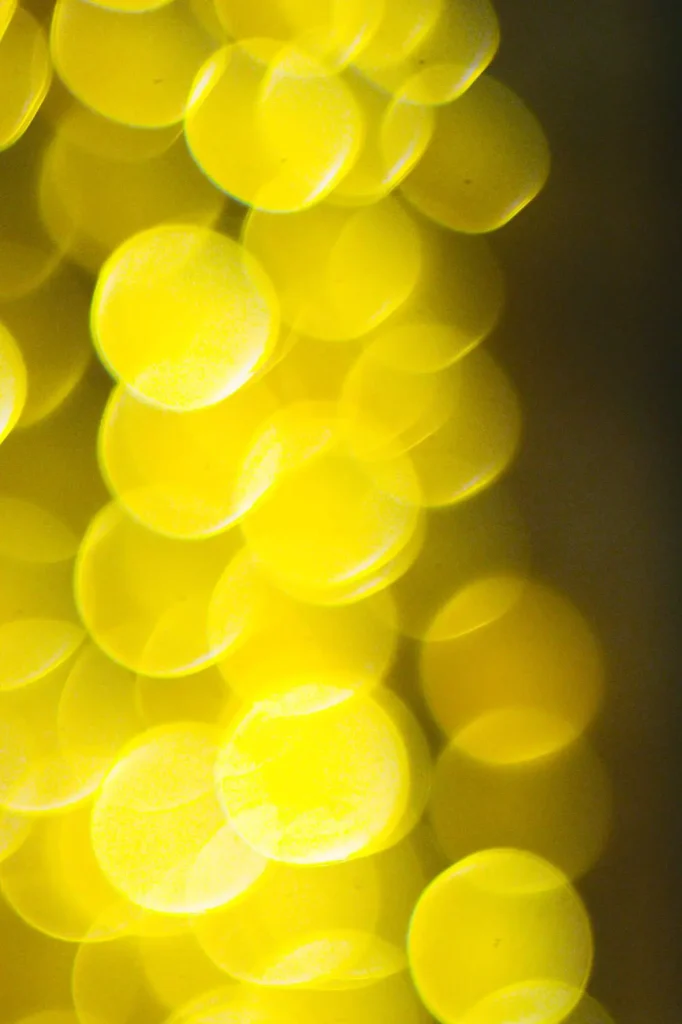
For Portraits
I am not a portrait photographer by any means – it isn’t work I particularly enjoy or gravitate towards, but it does play a role in my work, both when hired for portraiture, or when incorporating it into my photojournalism. I see portraiture as being quite a clinical description, especially when in a studio session. If my intent is to produce a likeness of a person I would much rather it be in a candid moment, with energy and life in the eyes, rather than guided, or posed, or staged.
Environmental/environmental candid portraiture, or better yet action and activity is a more documentary analysis of people, in organic situations for me. When applying the 7artisans lens to this kind of work it has been interesting to see the way that the character of the lens influences the way I depict my subjects. Being able to render the context in certain ways using the “look” to their advantage.
The lens is sharp enough to stand apart from the Thambar, but soft enough to be very flattering to details. Skin is smoothed, eyes glow, and the overall rendering is usually very lovely especially when wide open; I really prefer to shoot it that way for portraiture, and usually really enjoy the final results.
For a slightly more alternative kind of portrait I found that this lens was a really excellent choice. I very briefly shot some work with a fine art collective called Stealing Frames, who use things like long exposure, double exposure, prisms, shooting through water, messing with film/prints during development, to achieve a really unique and often other worldly effect. These are things I would never think to incorporate into my usual work so I used the opportunity to really play with what was possible in these kinds of images. I found that when using things like prisms alongside this lens it renders them very subtly, which makes the final image nicely nuanced.
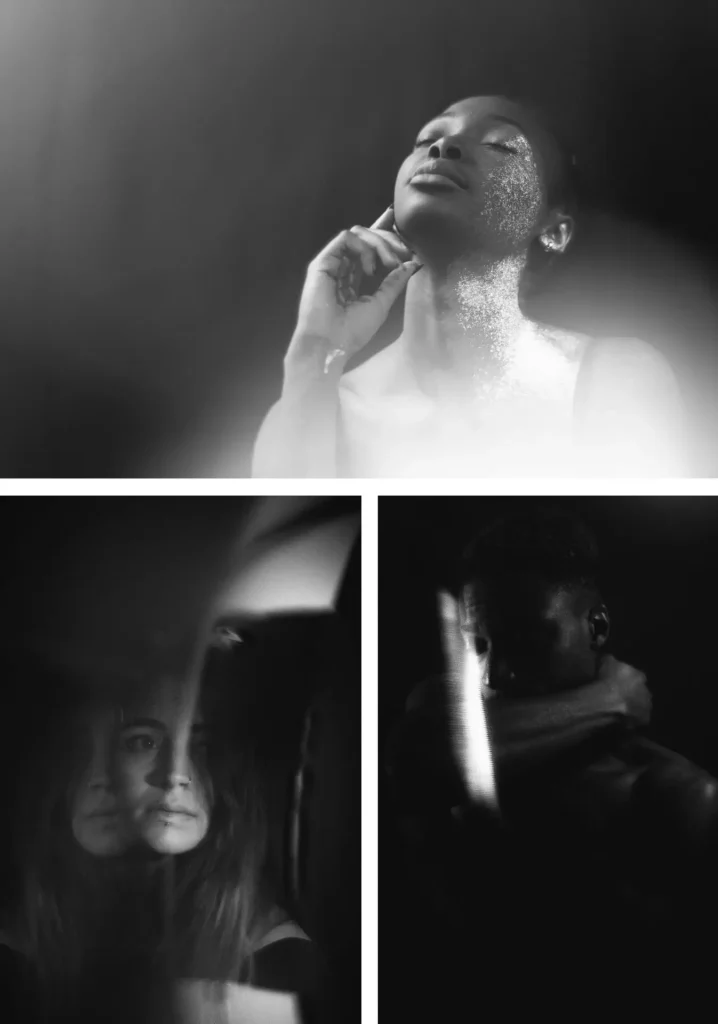
This way of shooting, and this style, was really just something to play with and not something I would take seriously, but I was actually pretty happy with quite a few of the examples – all of which were made with the 7artisans lens. I think the softness of the lens plays a role as well, as it means that layering things through the foreground, and then the subject, are all fairly similarly detailed and equally soft, rather than with a sharper lens where this contrast may be far more apparent.
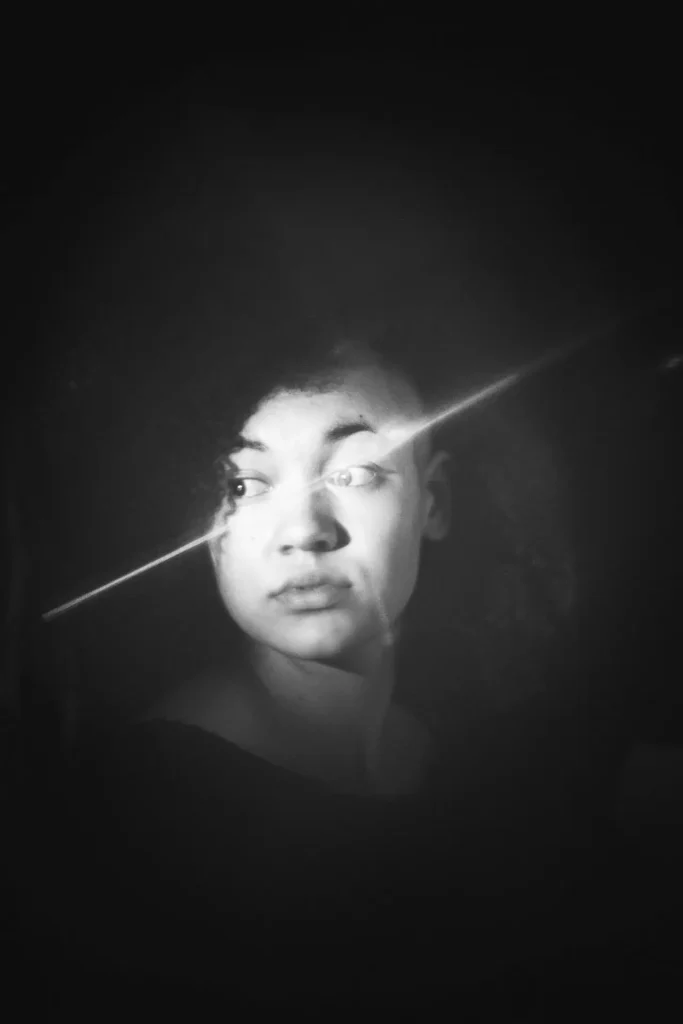
The wideness of the aperture offers itself to some wonderfully creative possibilities in portrait work. I’ve enjoyed focusing through foreground detail with my subject placed behind this. This is similar to the use of prisms with Stealing Frames, but in a natural setting, without needing any props.
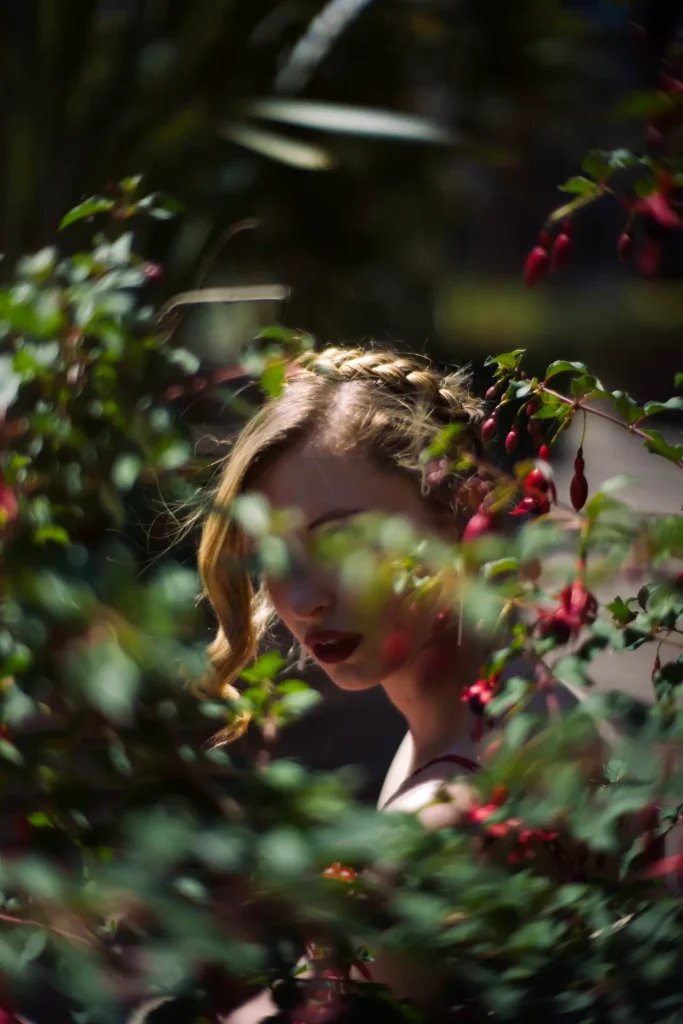
It’s the same again with the flare the lens offers in the right situations – I use this to accentuate parts of the frame, incorporating it into my composition whenever possible.
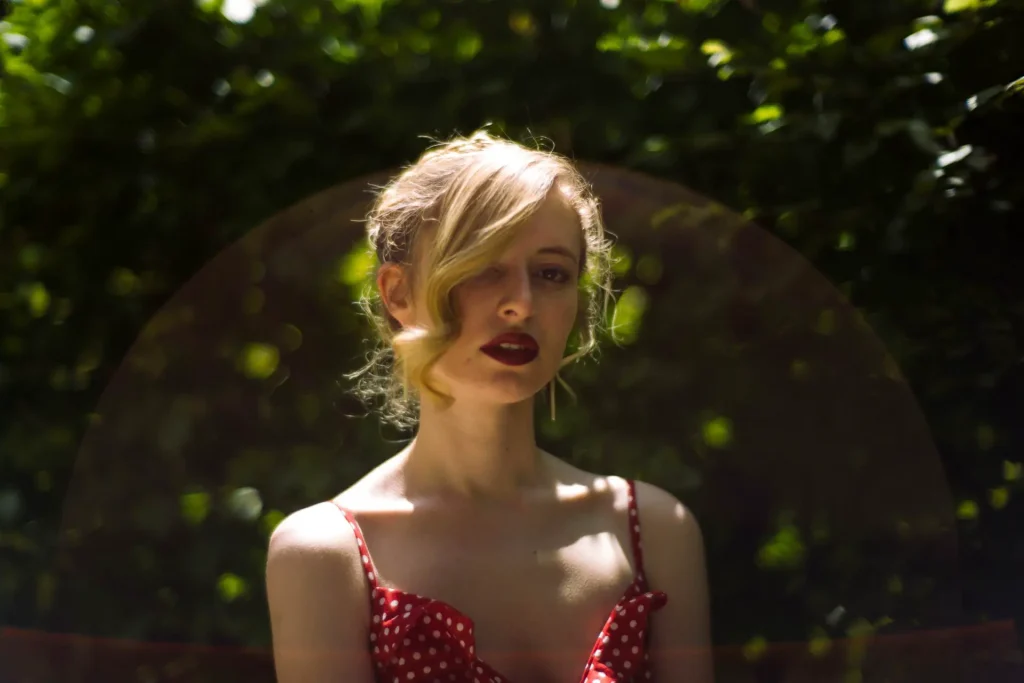
The directional bokeh is really great, especially when focusing on a subject that’s quite close to you. This portrait was taken with my subject at around 90cm away from me, and the background maybe half a meter from her. I think this image wouldn’t be nearly as effective without the background working in this way to accentuate the foreground.
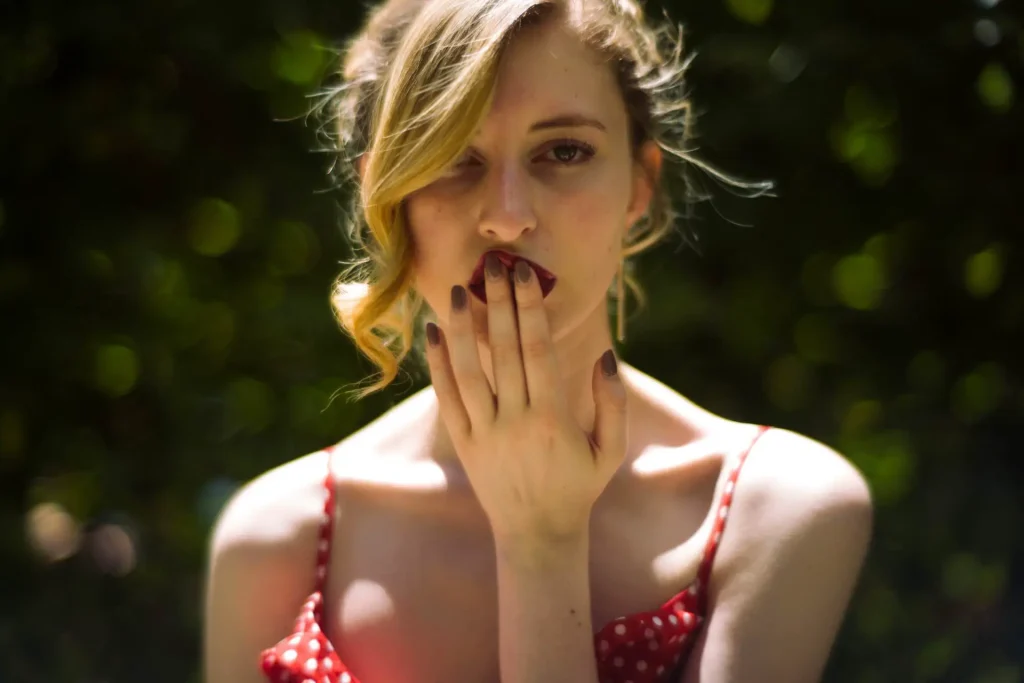
For Documentary
The main genre of photography I shoot is documentary, in both photojournalism and street. Although my preferred lens for this is 90mm I use 50mm fairly frequently, especially if the work is going to be a little closer, and fast paced. For this kind of fast paced image practice will be very important, especially when focusing wide open. The ability to nail focus at f/1.1 with this lens will come down to two things: how well your camera and lens are calibrated, and the amount of practice you have with a rangefinder camera.
I’ve been using rangefinders for my entire career, and find it very easy to nail focus using the rangefinder system. One of the best things about a rangefinder is that regardless of the aperture of the camera is set to the focusing mechanism will not change; you are not looking through the lens, so a lower or higher aperture has no effect over what you see. This makes it one of the easiest systems to nail focus wide open on.
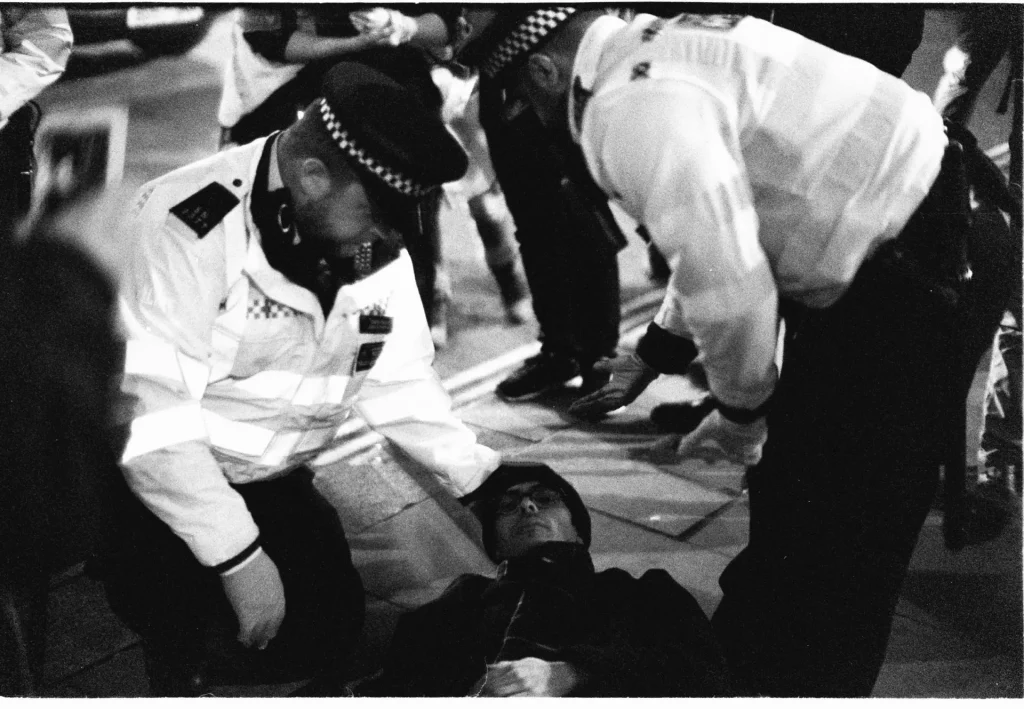
For situations which require me to walk backwards while focusing on a subject moving through planes of focus in front of me there’s no real advice or tricks I can offer other than to practice and find what works for you. Usually moving at the same speed as the subject pays off, but this requires good situational awareness to avoid tripping or knocking into things.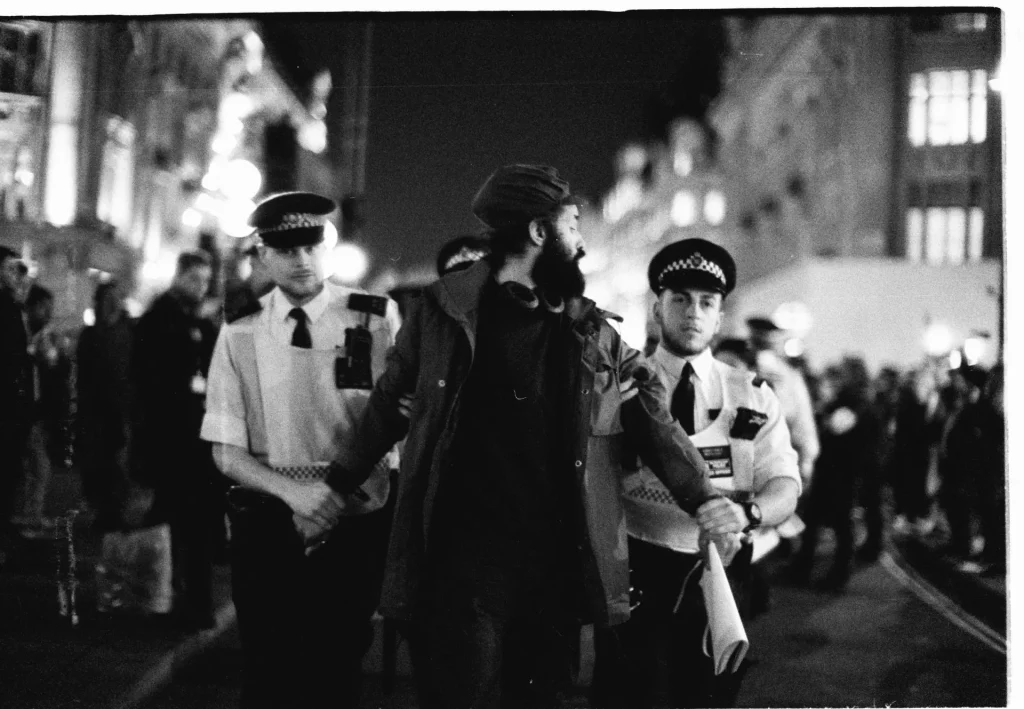
In terms of the characteristics of the lens interfering with the accuracy of the rendering of journalistic events I can’t say I’ve ever been bothered by something feeling too unrealistic as a result of the look of this lens. I think that film is more forgiving than digital in most cases, especially when paired with soft lenses, so for my film-based photojournalism the look of the lens is sort of balanced out by the feel of the film.
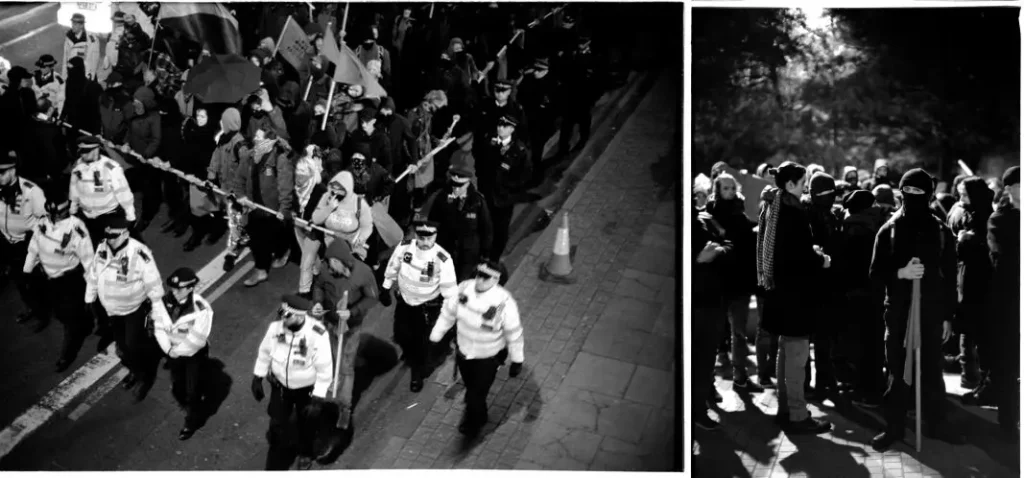
My Ideal Use Case
I initially wanted this lens to be a cheap low-light solution, for use in situations I would be uncomfortable and maybe held back by the potential for damage to the more expensive Noctilux and Zeiss Sonnar lenses which were my previous go-to for low-light photography. However I was very impressed with the sharpness offered by the 7artisans, as it is definitely not soft by my personal standards – although marginally softer than the Zeiss and Noctilux. I had been playing with the idea of selling the Noctilux for some time and eventually made this a reality when I realised it had sat unused for about eight months, and I simply had no urge to use it. Anytime I came close I picked the 7artisans instead – the weight, lower price, and parity between the low-light potential left me with a very easy choice.
Eventually holding onto the Noctilux became sort of meaningless, as I’d rather focus on taking pictures than hoarding gear I might use, so I sold it and honestly haven’t missed it since. It took me a little longer to be comfortable with the idea of selling the Zeiss – this had one benefit over the 7artisans, in terms of the weight. I think the quality between these two lenses at 1.5/1.4 is pretty much identical, so again after a while of not using the Zeiss I made the decision to sell that too.
It really was a hard decision to sell the Zeiss Sonnar, as I’d used this for pretty much the majority of my early work – I’d even had a piece featured on the Zeiss blog about it. However at this point in my photography I just want to focus on shooting, and again owning too many lenses will hold me back in my decision making.
So instead of owning three lenses which occupy essentially the same role in my work now I just use this, and honestly haven’t missed them at all since then. Rather than deciding on what to use based on essentially whims my options for 50mm are now either the 7artisans or, when sharpness becomes a factor, my Zeiss 50mm Planar.
This left me with quite a broad use case for this lens, and it ticks a lot of boxes for me. It’s definitely not a one-trick lens by any means, and it’s yet to offer me results that either I or my clients are unhappy with. For sure my absolute best case application for it would be for film photography – the wide aperture is a must for maximising my shutter speed when my film ISO is lower than I’d prefer.
I’ve found it to be the perfect fit for my usual requirements for a 50mm lens – that is to be something fast and elegant, to frame subjects within around 10 meters from me, in situations which require fast reactions to capture fleeting moments. For street and documentary reportage work it’s a real Swiss army knife, dealing with all and any difficult conditions. I’ve also found excellent potential for set stills, and fashion photography, as well as general portraits – but these are areas I’m less excited about.
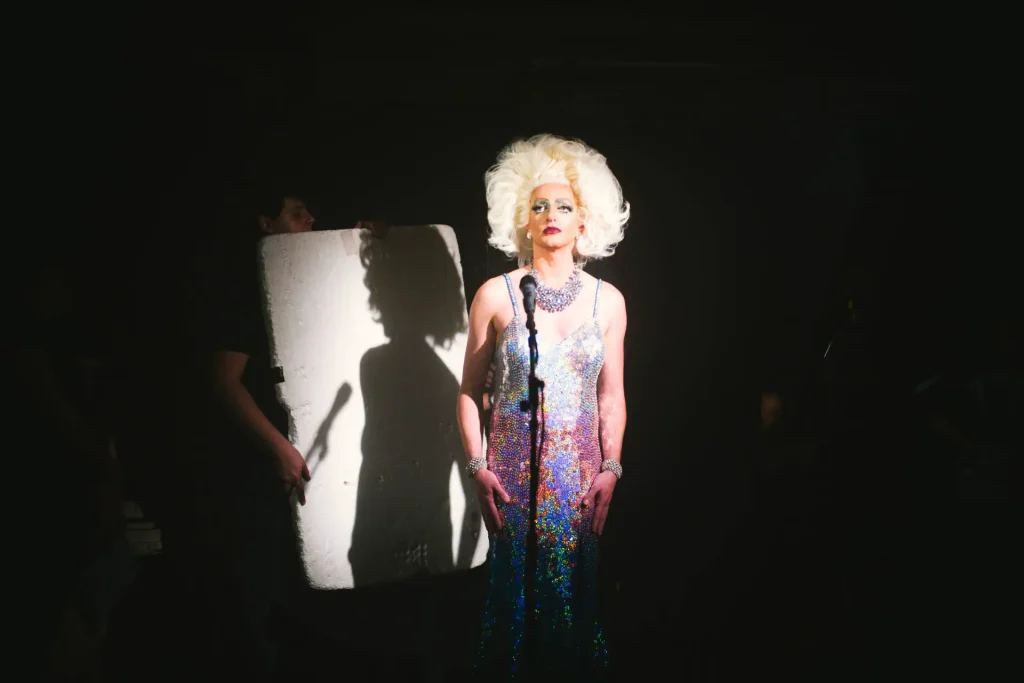
The real ideal use for this lens so far for me has been a combination of low light conditions, with this lens wide open, rendering onto a 3200 speed film, with a shutter of 1/125ths – 1/4ths depending on the availability of light. With these parameters I don’t need to give any thought to my metering, as the latitude of the film will catch any blown out highlights, and if not then the lens will render them beautifully. This way my entire attention can be driven towards seeking out those unique moments and reacting to them quickly.
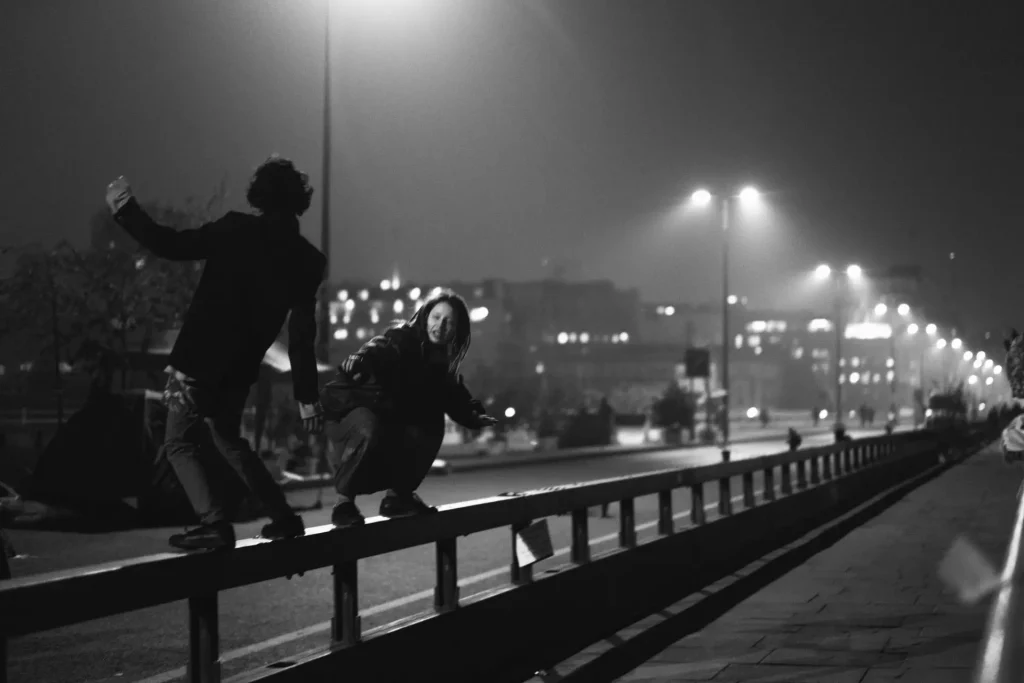
Shortcomings
This is a difficult area to really nail down, as with any character lens any drawback can be waved away with “it’s a feature.” The softness? A feature. Halation? Feature. Glare? Feature. Vignetting? Feature.
It’s definitely soft, definitely the softest lens I own, and almost certainly the softest M lens aside from the Thambar. It definitely has elements that would put some people off from using it entirely and this is a shame, but so far I don’t think that any of these things have been dealbreakers. The worst I’ve felt is the severe chromatic aberration, but this only gets bad when shooting on digital, in colour, in a backlit situation, and that doesn’t happen very often. I couldn’t even find any examples in my archive to show here. It certainly doesn’t have any effect on my use with black and white film.
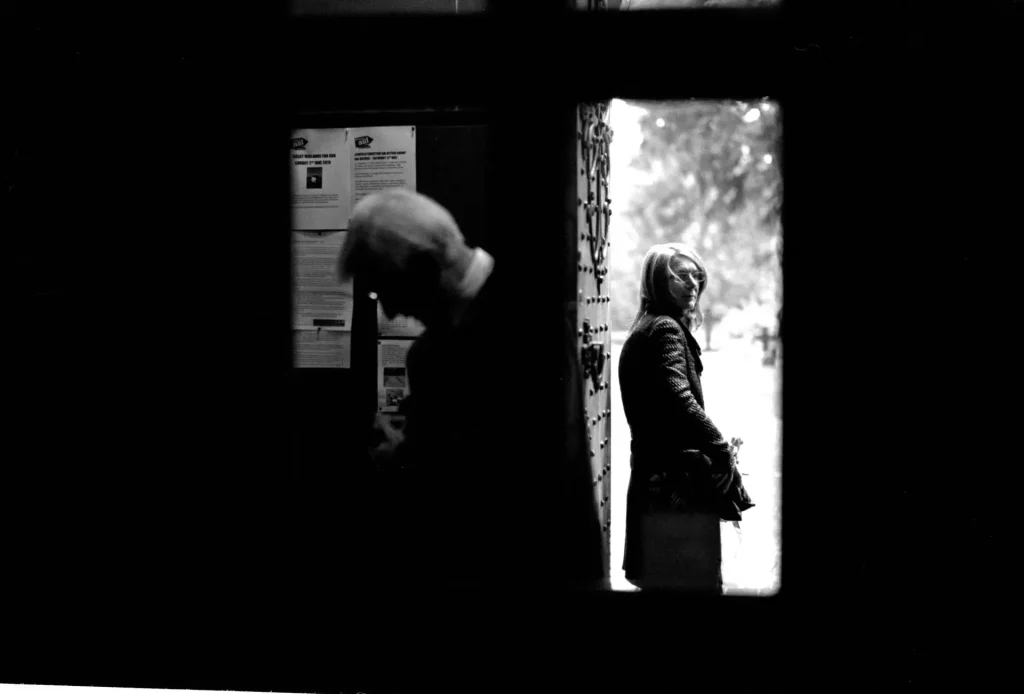 My experience of this lens has been pretty consistent happy use, without worry about sharpness, distortion, or any of the other factors. For some I understand these will be dealbreakers, but I will always advocate a mindset that emphasises generating quality images rather than images which possess characteristics of quality. Refinement and perfection of ideas, not technical matters.
My experience of this lens has been pretty consistent happy use, without worry about sharpness, distortion, or any of the other factors. For some I understand these will be dealbreakers, but I will always advocate a mindset that emphasises generating quality images rather than images which possess characteristics of quality. Refinement and perfection of ideas, not technical matters.
Conclusion
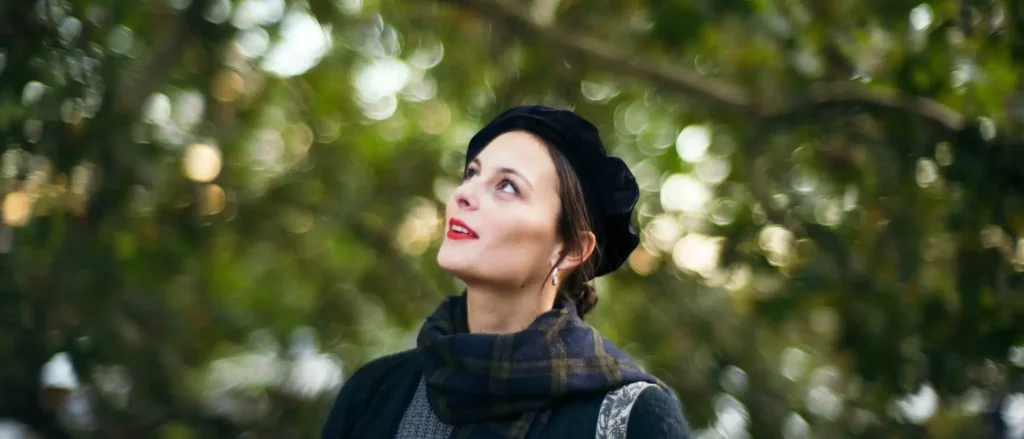
I think that if anyone feels their use of this lens would be similar to my application then it’s an easy purchase, it’s as simple as that. If your goal is personal or even serious documentary, portrait, or general purpose photography then this is an exceptional lens. I balance out the use of the 7artisans with my Zeiss Planar which has none of the issues of the 7artisans, so if a client is ever not comfortable with me using a softer lens then I have the option to go sharper. The difference between the two in my eyes however comes down to basically two(ish) stops of light. That’s it. On film that can mean the difference between nailing the shot and missing it, and on digital it isn’t all that much these days.
I honestly think that this lens is the perfect one-lens solution to any film rangefinder user. It has character and fantastic applications wide open, and stopped down produces excellent results. The absolute wow factor for this lens is the price, whatever way you look at it. It makes rangefinder photography that much more accessible to people for whom even Voigtlander lenses were pricy. I think it could offer even half as much in terms of quality for the price and still be an excellent option. It performs than the majority of “rare” vintage lenses which sell for ten times the price, and outlasted two of the most iconic rangefinder 50mm lenses in my own use.
I haven’t tried the other lenses by 7artisans yet, as 50mm is their only offering so far I would actually use. I hear their 35mm f/2 is incredibly close to the Summicron, and honestly I believe that. That means that a combination of their 35mm and this 50mm may be the perfect all round street and reportage setup, as those are the two most popular lengths for that genre. I would be very interested if their ever released a 90mm at any aperture, but would be an immediate buy if it were at 2.8/2. I also think a 50mm f/2 by them would be incredible, especially if they were to make it a pancake, another easy buy – but these things are easy to think of when being entirely hypothetically. Of course, having seen what they did with this lens I am more inclined to speculate, as I really think they are likely to produce some really interesting and more importantly accessible rangefinder lenses.
Thanks for taking the time to read about my experiences with the 7artisans 50mm f/1.1. I hope it’s been useful to helping you decide whether or not it’s something for you! If you’ve enjoyed my images here then you might consider following my work on Instagram. I buy all of my film from Analogue Wonderland.
Share this post:
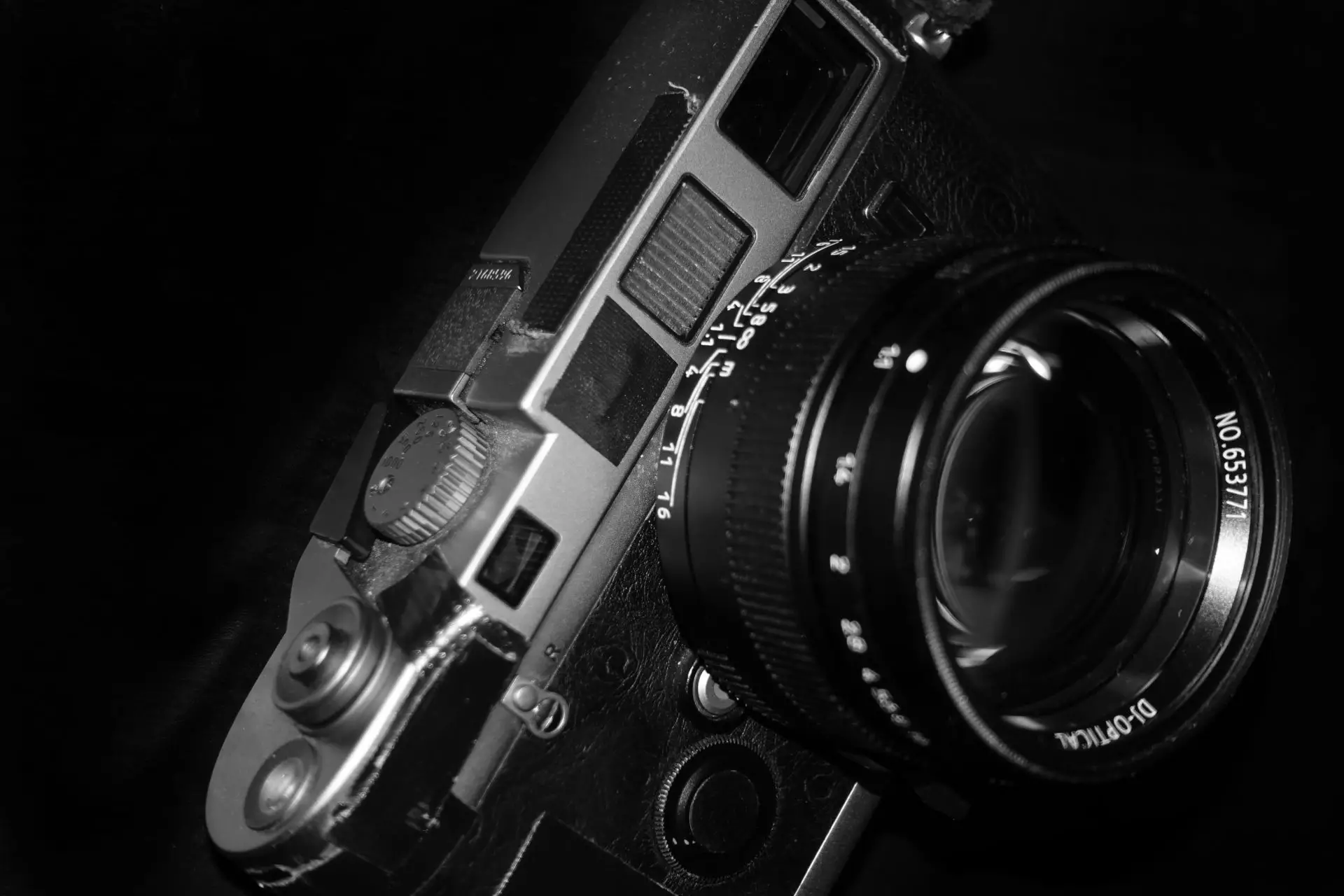








Comments
Eric Rose on 7artisans 50mm f/1.1 Long Term Review – by Simon King
Comment posted: 17/01/2020
Comment posted: 17/01/2020
Mark vd Wal on 7artisans 50mm f/1.1 Long Term Review – by Simon King
Comment posted: 17/01/2020
eric on 7artisans 50mm f/1.1 Long Term Review – by Simon King
Comment posted: 18/01/2020
Comment posted: 18/01/2020
Nikolay on 7artisans 50mm f/1.1 Long Term Review – by Simon King
Comment posted: 18/01/2020
Never could understand all the hype about the 1,25/75mm and 1,4/28mm (both M-mount). Terrible lensens, noting is sharp up to f5.6. Send them back, kept the rest.
Teriific work Simon, please keep on going.
Comment posted: 18/01/2020
baris tandogan on 7artisans 50mm f/1.1 Long Term Review – by Simon King
Comment posted: 18/01/2020
Aivaras on 7artisans 50mm f/1.1 Long Term Review – by Simon King
Comment posted: 19/01/2020
Paul on 7artisans 50mm f/1.1 Long Term Review – by Simon King
Comment posted: 20/01/2020
Comment posted: 20/01/2020
Andrew Bowness on 7artisans 50mm f/1.1 Long Term Review – by Simon King
Comment posted: 20/01/2020
Comment posted: 20/01/2020
Huss on 7artisans 50mm f/1.1 Long Term Review – by Simon King
Comment posted: 20/01/2020
I like this lens so much I have two - in black and in silver. I also have the 35 and the 28 1.4.
One thing that no-one seems to mention is that they all focus past infinity. They focus accurately via the rf, but unlike most rf lenses they stop at infinity.
I think it can be corrected by focussing via the rf patch, then loosening the screws on the focus dial and rotate the dial so it matches up correctly, then re-tightening. I never bothered with mine as I just use the rf patch and do not try to zone focus.
p.s. I get it about selling your Noctilux etc.. There are a bunch of Leica lenses I haven't used in a long time now.
Comment posted: 20/01/2020
Bruno Chalifour on 7artisans 50mm f/1.1 Long Term Review – by Simon King
Comment posted: 18/05/2020
Nick Clayton on 7artisans 50mm f/1.1 Long Term Review – by Simon King
Comment posted: 04/08/2020
Joshua on 7artisans 50mm f/1.1 Long Term Review – by Simon King
Comment posted: 10/12/2020
Comment posted: 10/12/2020